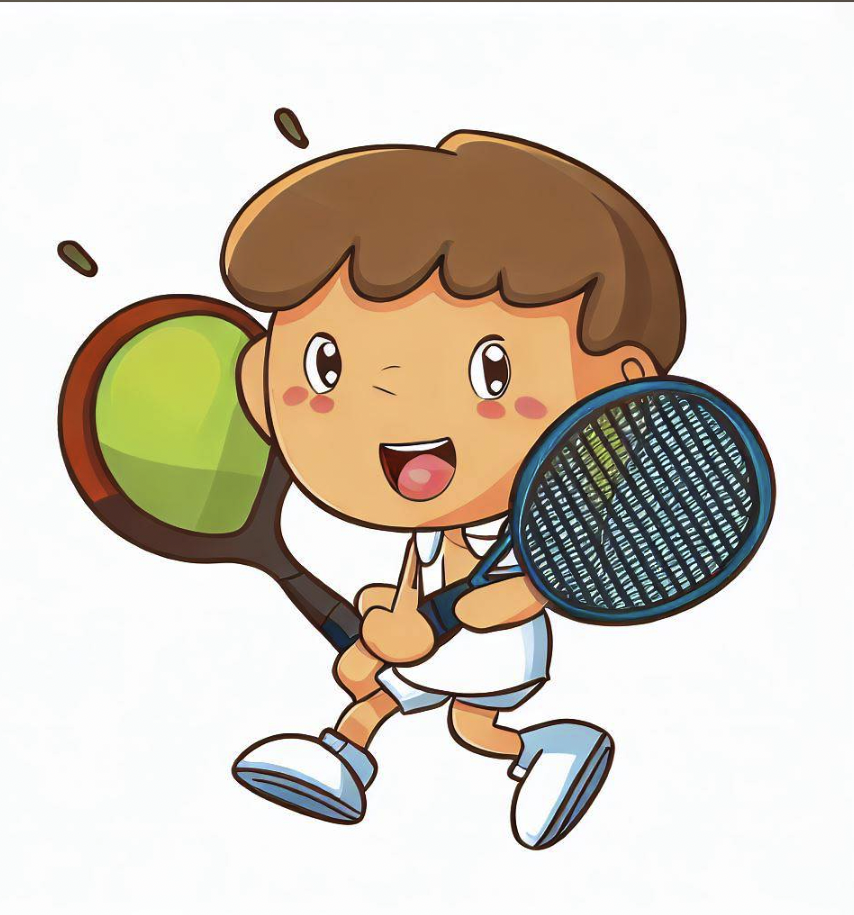The slice backhand is a crucial shot in tennis that can give players a significant advantage on the court.
It is a shot that is often underutilized but can be a powerful weapon when executed correctly.
In this guide, we will explore the technique, benefits, and strategies associated with the slice backhand.
Whether you are a beginner or an advanced player, this article will provide insights to help you improve your slice backhand and enhance your overall game.
Understanding the Slice Backhand
The slice backhand is a shot in tennis where the player strikes the ball with a slicing motion, causing it to spin and stay low over the net.
Unlike the topspin or flat backhand, the slice backhand imparts backspin on the ball, making it difficult for opponents to attack or return aggressively.
It is a versatile shot that can be used defensively to neutralize powerful shots or offensively to create angles and open up the court.
Benefits of the Slice Backhand
- Control: The slice backhand offers excellent control over the ball, allowing players to place it precisely where they want. This control is especially useful when playing against aggressive opponents or in windy conditions.
- Low Bounce: The backspin on the slice backhand causes the ball to stay low after it crosses the net, making it challenging for opponents to attack or hit powerful shots in response.
- Angle Creation: The slice backhand can be used to create angles and open up the court. By hitting the ball with a slicing motion, players can make the ball curve and land in unexpected areas, putting their opponents on the defensive.
- Change of Pace: The slice backhand can be a great change of pace shot, especially when used after hitting topspin or flat shots. The change in spin and trajectory can disrupt opponents’ rhythm and force errors.
Technique for the Slice Backhand
Mastering the technique of the slice backhand is essential to execute the shot effectively. Here are the key steps to follow:
Grip
Start by using an Eastern or Continental grip, which allows for better control and maneuverability of the racket.
The grip should be firm but not too tight, allowing for flexibility in the wrist and forearm.
Stance and Preparation
Assume a neutral stance with your feet shoulder-width apart and parallel to the baseline.
Keep your knees slightly bent to maintain balance and stability.
As your opponent prepares to hit the ball, get into a ready position by turning your shoulders sideways and positioning your racket in front of your body.
Backswing
As the ball approaches, initiate the backswing by turning your shoulders and hips sideways.
Extend your non-dominant arm towards the ball for balance and timing.
Keep your racket head slightly above the grip level and parallel to the ground.
Contact and Follow-through
As the ball reaches the ideal contact point, swing your racket forward with a slight downward motion.
Make contact with the ball slightly in front of your body and aim to brush the back of the ball with an open racket face.
This brushing motion will generate the desired backspin. Follow through with your swing, allowing your racket to finish low and across your body.
Footwork
Good footwork is crucial for executing the slice backhand effectively.
As you swing your racket, transfer your weight from your back foot to your front foot, rotating your hips and shoulders in the process.
This weight transfer will provide power and stability to your shot.
Tennis Backhand Slice Lesson – How To Slice Like Federer in 3 Steps
Strategies for the Slice Backhand
Now that you have a solid understanding of the technique, let’s explore some strategies to maximize the effectiveness of your slice backhand:
Defensive Strategy
The slice backhand can be a valuable defensive shot, allowing you to neutralize powerful shots from your opponent.
Use the slice backhand when you are on the run or out of position to buy yourself time and regain control of the point.
Aim to keep the ball low and deep, forcing your opponent to hit from a defensive position.
Angle Creation
One of the key advantages of the slice backhand is its ability to create angles.
Use this shot to open up the court and force your opponent to cover more ground.
By hitting the ball with a slicing motion, you can make it curve and land in unexpected areas, making it difficult for your opponent to reach and return effectively.
Approach Shot
The slice backhand can be an effective approach shot, setting you up for a volley or an overhead smash.
Use the slice backhand to keep the ball low and force your opponent to hit an upward shot, giving you an opportunity to move forward and take control of the net.
Change of Pace
Use the slice backhand as a change of pace shot to disrupt your opponent’s rhythm.
Alternate between topspin, flat shots, and slice backhands to keep your opponent guessing and make it difficult for them to anticipate your shots.
FAQs – Slice Backhand in Tennis (How to Guide)
1. What is the slice backhand in tennis?
The slice backhand is a shot in tennis where the player strikes the ball with a slicing motion, causing it to spin and stay low over the net.
2. What are the benefits of using the slice backhand?
The benefits of using the slice backhand include control, low bounce, angle creation, and change of pace.
3. What grip should I use for the slice backhand?
It is recommended to use an Eastern or Continental grip for better control and maneuverability of the racket.
4. How should I position my body for the slice backhand?
Assume a neutral stance with your feet shoulder-width apart and parallel to the baseline.
Keep your knees slightly bent and turn your shoulders sideways.
5. Where should I make contact with the ball?
Aim to make contact with the ball slightly in front of your body, brushing the back of the ball with an open racket face.
6. How can I create angles with the slice backhand?
By hitting the ball with a slicing motion, you can make it curve and land in unexpected areas, creating angles and making it difficult for your opponent to reach and return effectively.
7. Can the slice backhand be used defensively?
Yes, the slice backhand can be a valuable defensive shot, allowing you to neutralize powerful shots from your opponent and buy yourself time to regain control of the point.
8. How can I use the slice backhand as an approach shot?
Use the slice backhand to keep the ball low and force your opponent to hit an upward shot, giving you an opportunity to move forward and take control of the net.
9. Should I use the slice backhand as a change of pace shot?
Yes, the slice backhand can be a great change of pace shot, especially when used after hitting topspin or flat shots.
The change in spin and trajectory can disrupt opponents’ rhythm and force errors.
10. How can I improve my slice backhand?
Practice regularly, focusing on the technique and footwork. Seek feedback from a coach or experienced player to identify areas for improvement.
11. Can the slice backhand be used on all surfaces?
Yes, the slice backhand can be used on all surfaces, but its effectiveness may vary.
It is particularly useful on grass and hard courts.
12. Are there any professional players known for their slice backhand?
Yes, Roger Federer and Martina Hingis are known for their exceptional slice backhands.
13. Can the slice backhand be used in doubles?
Yes, the slice backhand can be used in doubles to keep the ball low and force errors from the opposing team.
14. How can I practice the slice backhand?
Practice the slice backhand by hitting against a wall or with a partner.
Focus on consistency, control, and generating backspin.
15. Can the slice backhand be used as a defensive lob?
Yes, the slice backhand can be used as a defensive lob to buy time and reset the point.
Summary
The slice backhand is a valuable shot in tennis that offers control, low bounce, angle creation, and change of pace.
By mastering the technique and incorporating strategies, players can enhance their overall game and gain a competitive edge.
Regular practice and seeking feedback from experienced players or coaches are essential for improving the slice backhand.
So, go out on the court, practice your slice backhand, and take your game to the next level!


